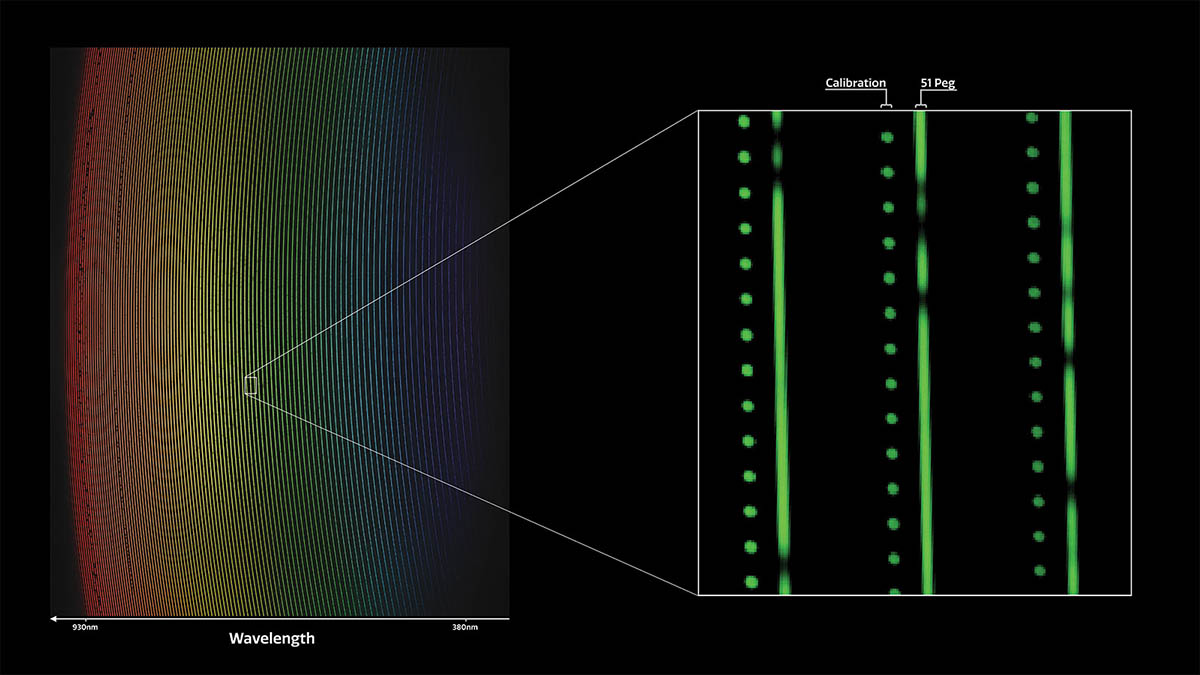The light of the star 51 Pegasi is spread out to reveal individual wavelengths, or colors, (left). A zoomed-in section (right) shows gaps that reveal the presence of specific chemical elements. Called spectroscopy, this technique is a key step in the NEID instrument’s search for exoplanets. (Guðmundur Kári Stefánsson/Princeton University/NSF’s National Optical-Infrared Astronomy Research Laboratory/KPNO/NSF/AURA)
Home The light of the star 51 Pegasi is spread out to reveal individual wavelengths, or colors, (left). A zoomed-in section (right) shows gaps that reveal the presence of specific chemical elements. Called spectroscopy, this technique is a key step in the NEID instrument’s search for exoplanets. (Guðmundur Kári Stefánsson/Princeton University/NSF’s National Optical-Infrared Astronomy Research Laboratory/KPNO/NSF/AURA) The light of the star 51 Pegasi is spread out to reveal individual wavelengths, or colors, (left). A zoomed-in section (right) shows gaps that reveal the presence of specific chemical elements. Called spectroscopy, this technique is a key step in the NEID instrument’s search for exoplanets. (Guðmundur Kári Stefánsson/Princeton University/NSF’s National Optical-Infrared Astronomy Research Laboratory/KPNO/NSF/AURA)
The light of the star 51 Pegasi is spread out to reveal individual wavelengths, or colors, (left). A zoomed-in section (right) shows gaps that reveal the presence of specific chemical elements. Called spectroscopy, this technique is a key step in the NEID instrument’s search for exoplanets. (Guðmundur Kári Stefánsson/Princeton University/NSF’s National Optical-Infrared Astronomy Research Laboratory/KPNO/NSF/AURA)



